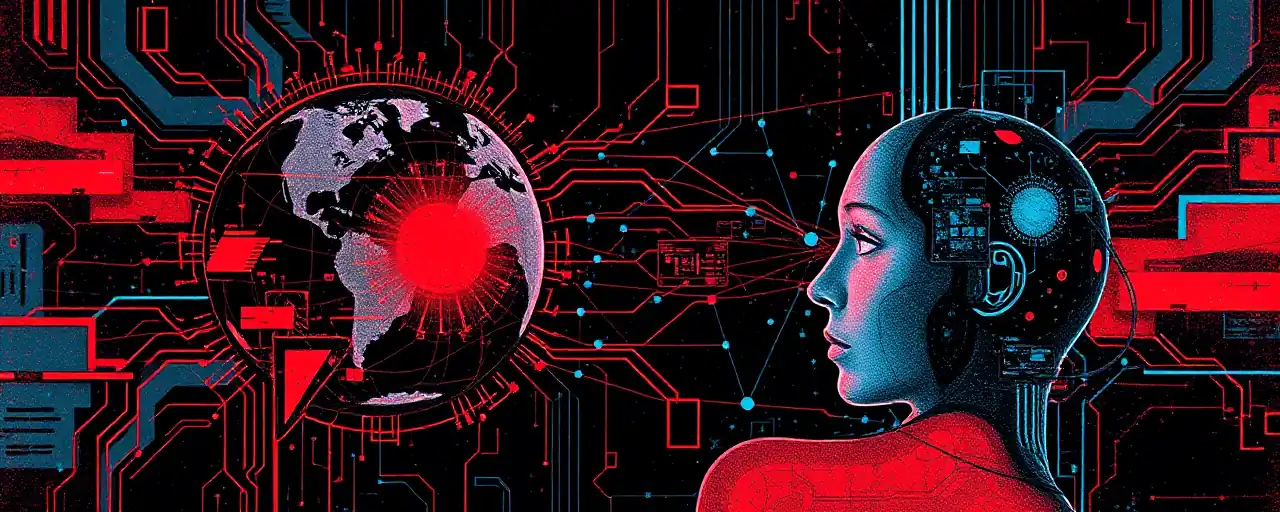A Bold Move for AI Education
President Donald Trump signed an executive order on April 23, 2025, aiming to weave artificial intelligence (AI) into the fabric of American education and workforce development. The goal is clear: equip young people and workers with skills to lead in a world increasingly shaped by AI. From classrooms to apprenticeships, the plan seeks to foster innovation and keep the U.S. competitive in a global tech race.
The order establishes a White House Task Force on AI Education, led by the Director of the Office of Science and Technology Policy. It includes heavyweights like the Secretaries of Education and Labor, tasked with creating a 'Presidential AI Challenge' to spur student and teacher engagement. Public-private partnerships are central, aiming to bring resources to K-12 schools and train educators to use AI tools effectively.
Yet, the ambition comes with questions. Can a system already stretched by resource gaps and uneven access deliver on this vision? Educators, policymakers, and industry leaders are watching closely, knowing the stakes are high in a world where AI is reshaping economies and societies.
The push reflects a broader recognition that AI is no longer a futuristic concept but a present force. From manufacturing to healthcare, its influence is growing, and nations like China and the European Union are investing heavily to claim their share of the AI frontier.
Classrooms at a Crossroads
Integrating AI into K-12 education is no small feat. Only 30% of teachers feel moderately confident using AI tools, while 45% report little to no confidence, according to recent studies. Many lack training, and a quarter of school districts still struggle with inadequate internet access. These gaps threaten to widen existing inequities, particularly in rural and underserved areas.
The executive order directs the Secretary of Education to prioritize AI in teacher training grants and tasks the National Science Foundation with researching AI’s role in education. But skepticism persists. A quarter of K-12 teachers view AI tools as more harmful than helpful, citing risks like academic misconduct and data privacy. Without clear policies—80% of districts lack them—teachers face uncertainty about how to use AI responsibly.
Public-private partnerships could bridge some gaps, drawing on industry expertise to provide tools and training. Programs like IBM’s SkillsBuild show how such collaborations can work, but scaling them nationwide requires coordination and funding. The order’s reliance on existing resources raises concerns, especially with recent federal cuts to education programs.
Workforce Transformation in Focus
Beyond schools, the executive order targets the workforce, directing the Secretary of Labor to boost AI-related apprenticeships and use Workforce Innovation and Opportunity Act funds for skills training. High school students will gain access to AI courses and certifications, aiming to prepare them for a labor market where AI is expected to create 19 million jobs globally by 2030, while displacing 9 million.
The World Economic Forum predicts that by 2030, work tasks will split nearly evenly among humans, machines, and hybrid teams. Skills like data analysis and cybersecurity are in high demand, and the order’s emphasis on work-based learning aligns with this shift. Yet, the transition won’t be seamless. Workers in low-skill sectors face the highest risk of displacement, and reskilling programs must be accessible to avoid leaving them behind.
Some stakeholders worry about the pace of change. Industry leaders praise the focus on apprenticeships but note that small businesses, which employ nearly half of U.S. workers, often lack resources to adopt AI or train staff. Balancing innovation with equity will be key to ensuring the benefits of AI reach diverse communities.
Global Stakes and Local Challenges
The U.S. is locked in a fierce global AI race, leading in research and investment but facing stiff competition from China, which boasts a 58% national AI adoption rate. The executive order frames AI education as a national priority to maintain this edge, but its success hinges on overcoming domestic hurdles. Ethical concerns, like algorithmic bias and privacy, demand clear guidelines, yet policy lags behind technology.
Voices from education and labor sectors highlight the need for inclusivity. Advocates for underserved communities argue that without targeted investment, AI education risks favoring already advantaged groups. Meanwhile, some policymakers caution against heavy federal involvement, favoring state-led initiatives and private sector innovation to avoid stifling progress.
Historical patterns offer context. Past technological shifts, from automation to the internet, disrupted jobs but created new opportunities. AI’s impact is likely to follow suit, but its speed and scale require proactive planning. The order’s focus on lifelong learning and collaboration across government, academia, and industry aims to meet this challenge head-on.
What Lies Ahead
Trump’s executive order sets an ambitious course, but its impact depends on execution. Bridging the gap between vision and reality will require sustained funding, teacher buy-in, and policies that address equity and ethics. The task force’s work, including the Presidential AI Challenge, could inspire innovation, but only if it reaches classrooms and communities nationwide.
As AI reshapes the world, the U.S. faces a pivotal moment. The choices made now—how to educate students, train workers, and navigate global competition—will shape the nation’s trajectory for decades. For everyday Americans, the question isn’t just about technology but about opportunity and fairness in an AI-driven future.
